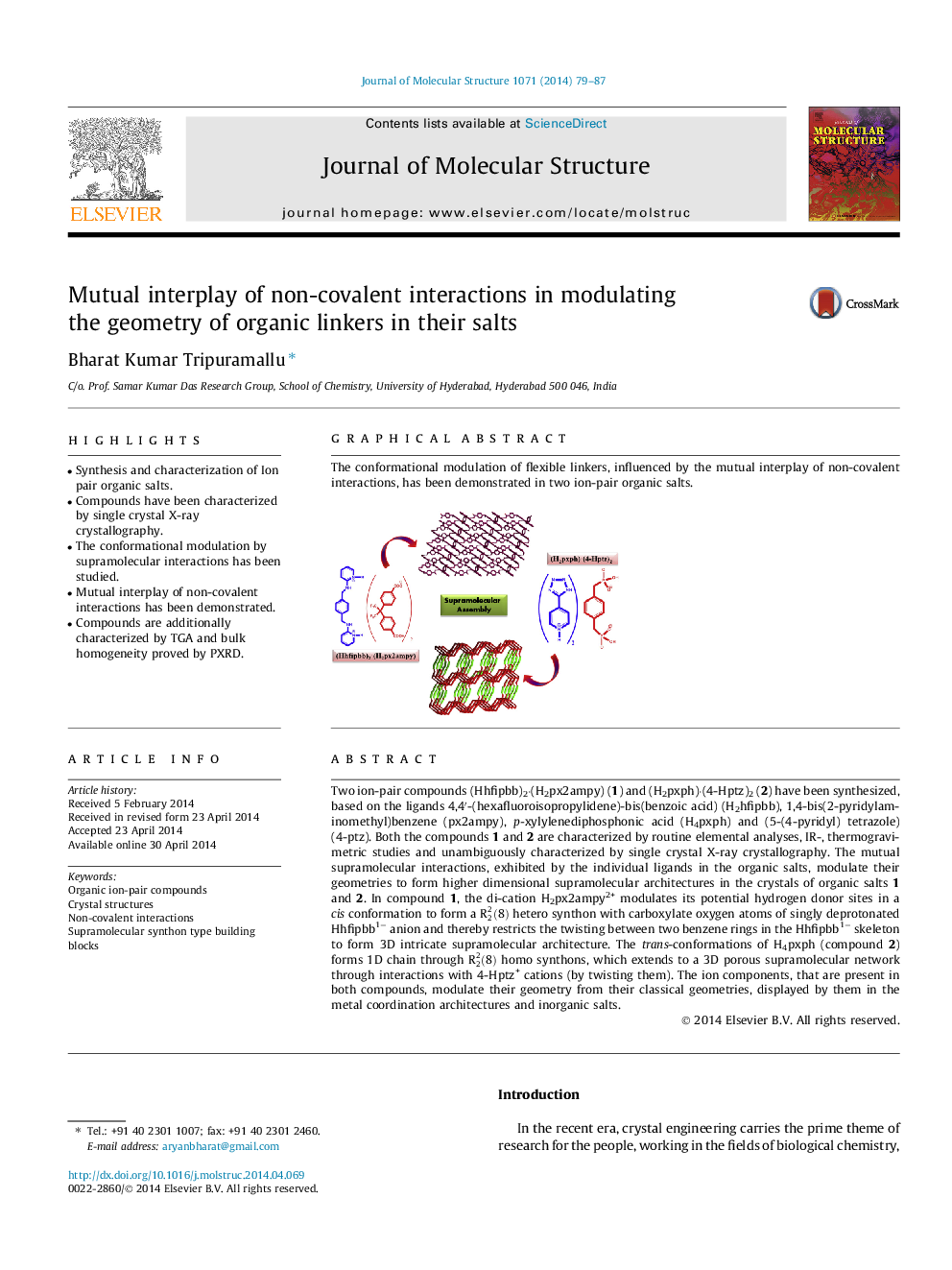| کد مقاله | کد نشریه | سال انتشار | مقاله انگلیسی | نسخه تمام متن |
|---|---|---|---|---|
| 1409288 | 1501746 | 2014 | 9 صفحه PDF | دانلود رایگان |
• Synthesis and characterization of Ion pair organic salts.
• Compounds have been characterized by single crystal X-ray crystallography.
• The conformational modulation by supramolecular interactions has been studied.
• Mutual interplay of non-covalent interactions has been demonstrated.
• Compounds are additionally characterized by TGA and bulk homogeneity proved by PXRD.
Two ion-pair compounds (Hhfipbb)2·(H2px2ampy) (1) and (H2pxph)·(4-Hptz)2 (2) have been synthesized, based on the ligands 4,4′-(hexafluoroisopropylidene)-bis(benzoic acid) (H2hfipbb), 1,4-bis(2-pyridylaminomethyl)benzene (px2ampy), p-xylylenediphosphonic acid (H4pxph) and (5-(4-pyridyl) tetrazole) (4-ptz). Both the compounds 1 and 2 are characterized by routine elemental analyses, IR-, thermogravimetric studies and unambiguously characterized by single crystal X-ray crystallography. The mutual supramolecular interactions, exhibited by the individual ligands in the organic salts, modulate their geometries to form higher dimensional supramolecular architectures in the crystals of organic salts 1 and 2. In compound 1, the di-cation H2px2ampy2+ modulates its potential hydrogen donor sites in a cis conformation to form a R22(8) hetero synthon with carboxylate oxygen atoms of singly deprotonated Hhfipbb1− anion and thereby restricts the twisting between two benzene rings in the Hhfipbb1− skeleton to form 3D intricate supramolecular architecture. The trans-conformations of H4pxph (compound 2) forms 1D chain through R22(8) homo synthons, which extends to a 3D porous supramolecular network through interactions with 4-Hptz+ cations (by twisting them). The ion components, that are present in both compounds, modulate their geometry from their classical geometries, displayed by them in the metal coordination architectures and inorganic salts.
The conformational modulation of flexible linkers, influenced by the mutual interplay of non-covalent interactions, has been demonstrated in two ion-pair organic salts.Figure optionsDownload as PowerPoint slide
Journal: Journal of Molecular Structure - Volume 1071, 5 August 2014, Pages 79–87
